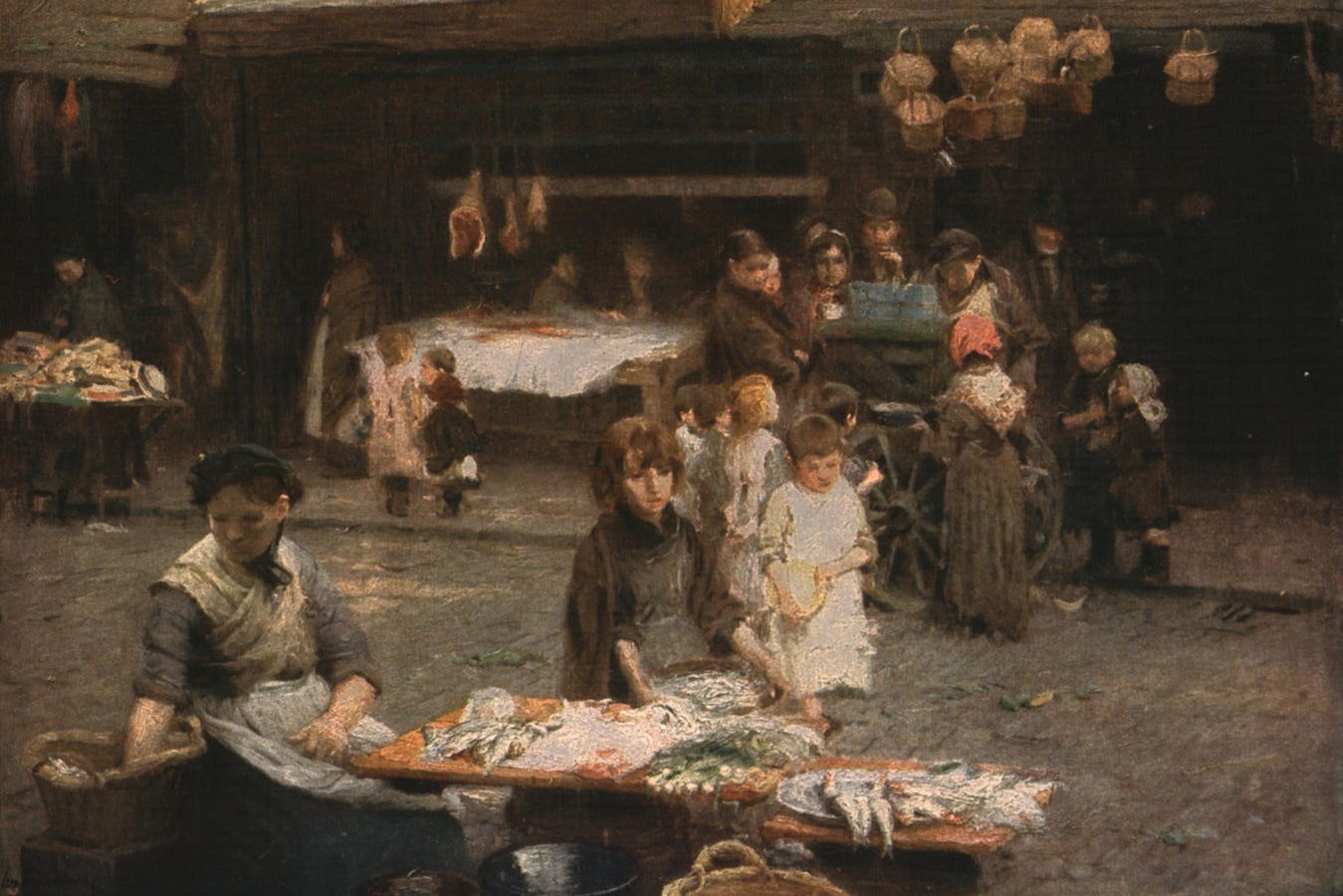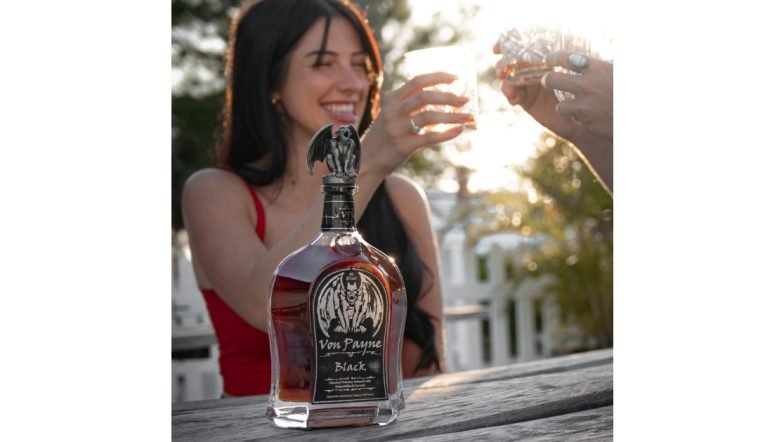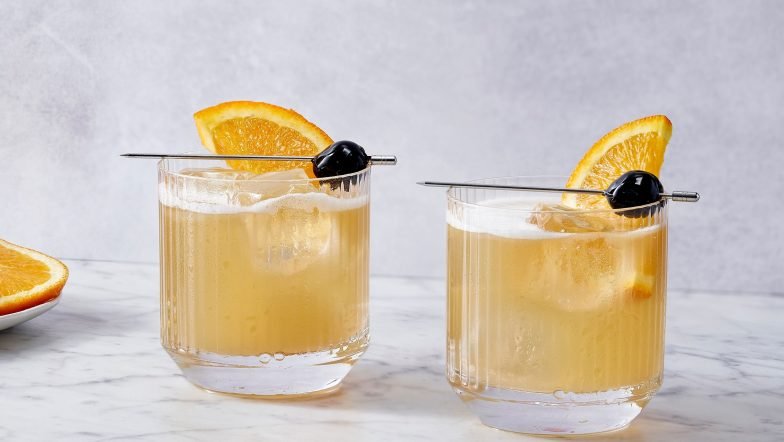As Ireland’s enriched whiskey offering goes from strength to strength, interest in its culinary potential is also spreading. With more than 40 distilleries experimenting with distillation, blending and casks style, this broader diversity is making its role alongside food all the more interesting. In the U.S. the category is booming too, and while the Jameson’s brand is relentlessly strong, consumers have greater access to high quality sipping whiskies that merit reflection. There is a belief that triple distillation – utilised in many of Ireland’s top releases – creates a smooth, easy drinking style that lends itself to gastronomic pairing. Here are the thoughts, and occasional nostalgia, of some of the country’s top chefs and distillers on the subject.
Damien Grey, The Liath, Dublin
Damien Grey, head chef at The Liath in Dublin
Two Michelin starred The Liath has embraced Irish whiskey, not only a fundamental part of Irish history, but also as key element in what Grey calls “an expression of new Irish cuisine, showcasing the country’s most special ingredients from both land and sea.” To commence a dining experience at The Liath, their version of a whiskey sour is introduced as a component of Tuś which is Gaelic for the beginning, birth or the start of something new, and seeks to deliver flavors based around the five taste characteristics – bitter, sour, salt, umami and sweet. It isn’t served how you might imagine however. “We use Egan’s 10-year-old single malt cask strength Irish whiskey, aged in American oak casks, and served as a jello shot”.
Grey, who grew up in Australia, believes that when using Irish whiskey the focus should fall on secondary and tertiary flavors more than the primary. “There’s more of a story you can capture, where background flavors are easily paired. For example, peated whiskey works well with chocolate, cheese and cured meats. Lighter styles of whiskey are more agreeable with fish, and white meats.” One of his favourite combinations is L’Etivaz cheese (made with milk from herds grazing the wildflower-rich high pastures above the snowline in the Vaud Alpes) with smoked beer onions, kale, olive oil and dried leeks paired with a 23 year old single malt finished in a Brunello di Montalcino 2014 barrel. “Here you really have something special; you have to really understand the whiskey before you pair it, but once the connection is made, it is breathtaking.”
One of the tasting treasures at The Liath, which evolved during the covid lock down to remerge with a contemporary look and feel to win a second star in 2022, is the pairing of a peaty Irish whiskey with chocolate. “We recap the menu with five sweets that have been profiled into the five senses of taste. Umami is represented by chocolate truffles, where we use Egan’s Endeavour, a cask strength, triple distilled single malt”. It won Double Gold at the 2023 San Francisco Wine and Spirits Awards and is used to enhance the dessert with smokey, rural and earthy savoury elements that “give you the true essence of Ireland and its cuisine today – modern but steeped in history.”
Patrick Guilbaud, Restaurant Guibert, Dublin
Patrick Guilbaud
Patrick Guilbaud has seen the face of dining in Ireland change radically during his 40 years at the helm of Restaurant Patrick Guilbaud. Having introduced classical French cuisine to Dublin back in 1981, a star followed in 89 and a second in 96. He reflects that few understood what they were doing when first starting out, but having seen dining fashions come and go, they continue their defence of two stars from salubrious Georgian townhouse surroundings next to the 5 star Merrion Hotel.
These days the proposition is product lead, and as such celebrates local ingredients, whiskey included. As a Frenchman though, he’s particularly fond of farmyard cheeses and sees them as an important companion to the growing choice in sipping whiskies. Patrick enthuses, ‘a delicious pairing to finish your meal would be the combination of a nice creamy blue cheese like a Cashel Blue or Young Buck, with options of a soft whiskey that has been finished in a sherry cask – such as a Yellow Spot 12 Year Old or Bushmills 10 Year Old.’
Another Guilbaud favourite is richly flavoured barbecue alongside rich sauces. For this, a lightly pleated Connamaragh whiskey ticks the boxes. “Its full flavours enhance the smoky aspects of the savoury, barbecued meats”. Deserts provide a strong opportunity to play with a whiskey pairing (you’ll note the recurring theme throughout) and he “loves pairing the restaurant’s contemporary dark chocolate tart with bourbon vanilla ice cream and a Teeling Brabazon whiskey, “which really accentuates the chocolate with nice oaky notes.”
John Kelly, Lady Helen (Mount Juliet Estate), County Kilkenny
Chef John Chef John Kelly of the Lady Helen Restaurant at Mount Juliet Estate
The Mount Juliet Estate houses John Kelly at the Lady Helen where he has served outstanding modern Irish cuisine in a 260-year-old country manor since he joined in 2011. Kelly was raised in Kilkenny, and went on to train under Patrick Gilbaud in Dublin, before returning to his origins and earning a Michelin star in 2013.
He draws his inspiration for the menus from seasonality and the availability of quality local produce, preferring to focus on a small number of ingredients. “We source high end products and we add one or two items to the plate, and that’s it. If you use more than that you dilute the ingredient, and also create confusion for the chef and customer.” Kelly believes the essence and taste will be lost in over complication. “Our motto at the Lady Helen is ‘keep it simple and do it well’”. As such, he’s more cautious on the involvement of whiskey in his menus, but is happy to experiment and push the boundaries when it makes sense.
While the whiskey trade is keen to explore gastronomic collaborations, Kelly says “it’s not a common pairing due to the nature of whiskey as a drink. However, its distinctive flavour range and aroma profiles mean there are robustly flavoured whiskeys that pair beautifully with meat and game.” Of course, its primary role in dining for most will remain as a digestif, but he points out that you can use the variety and versatility in Irish whiskey to create interesting dishes.
Kelly strives for balance and purity in his dishes, and so takes any ingredient used extremely seriously. A recent menu suggestion leaned on the subtly of flavour in the Waterford Whisky Sheestown Kilkenny Single Farm Edition to create a modern take on a typical St. Patrick’s Day dish. “Adding Irish venison to replace lamb in a traditional Irish Stew, along with the addition of a rich berry like blackcurrant, can be a great pairing with the whiskey, giving it complexity and a gentle sweetness.”
Vincent Crepel, Terre restaurant (Castlemartyr Resort), County Cork
Terre Founder Chef Vincent Crepel
Born in the Pyrenees, Vincent Crepel gravitated to Spain’s Basque country and notably scored an early role as chef de partie at the three-Michelin star Arzak, in San Sebastián. He added further experience in Singapore working for André Chiang and carried that influence to Ireland where he is now known for his contemporary French cuisine with an Asian influence.
Crepel won his first Michelin star just months after opening Terre and positions himself as ingredient lead. The restaurant is situated within the Manor House of Castlemartyr resort, and builds its offering around Crepel’s admiration for local produce. “From the first moment I saw the green fields of Ireland and its spectacular coastline, I have felt a connection with this land and its people.” Of course, setting up in Cork ensures an almost mandatory embrace of Irish Whiskey, especially given its proximity to the world famous Middleton distillery.
He smokes the caviar in specially selected Red Breast Barrels from Midleton and combines the power and smokiness from the barrel with the rich nuttiness of Kristal caviar, elevating its flavor profile to new heights. “Caviar is inherently challenging to enhance further due to its pristine quality. Thus, instead of directly smoking it, which could alter its delicate texture, we wrap our caviar in kelp that has already been smoked in Red Breast whiskey barrels, giving caviar an extra depth of flavor, making it a very special and unique dish for us.”
Mickael Viljanen, Chapter One, Dublin
Mickael Viljanen
Mickael Viljanen came to Ireland in 2000 and worked at the Tannery before spending five years at Gregan’s Castle. He moved to the Greenhouse in 2012, where in 2015 he won his first Michelin star, and a second star in 2019. His dream to go out on his own materialised in the form of a business partnership with Ross Lewis, the long standing owner of Chapter One, who has now stepped away from cooking duties and welcomed Viljanen into the fold.
The restaurant, located on the north side of the River Liffey, boasts a private dining space called the Middletown Room, named after Jameson’s flagship release. It houses the world’s only collection of every single vintage of Midleton available by the glass. Indeed, positioned in the former house of a Jameson’s distiller, you could say Chapter One is steeped in whiskey culture.
Although the tasting menu doesn’t lean strongly into pairings, Viljanen notes “whiskey is often present in our desserts and petit fours in different forms, and those with strong caramel notes are often matched with chocolate.” In main courses too; “we often pair slightly smokey or peaty whiskeys with game in season, using them in sauces and marinades, particularly with hare and grouse.” Perhaps the most iconic whiskey moment at Chapter One is the arrival of the coffee trolley. “This is a special moment. Our Irish coffee trolley, which we use to flambè table side, uses Jamesons.”
Some other voices on the pairing Irish whiskey with food
Scott White, Sommelier at d’Olier Street, Dublin
Scott White, sommelier at Michelin starred D’Olier Street, learned his trade at the prestigious Aimsir, in County Kildare. He notes that “Irish whiskey classically has this beautiful core of orchard fruit, caramelised apple and quince and is rounded off with spices from American oak, adding toasty and grassy notes of hay and toffee.” His ideal partnership is Middleton Very Rare 2023 alongside aged beef tartare and an accompaniment of raw button mushroom, sweet pickled onion, beef fat potato crisp, cep powder and some truffle. The pairing accentuates the earthiness of both. “It elevates and softens the oak and the rich orchard fruits matching the richness of the beef and the potato.”
Barry Mageean, Distillery Operations at McConnells in Belfast, considers the McConnell’s 5 year sherry finish, neat. “The whiskey alone is very much a sequence of festive fruits with a palatably distinct vanilla musk on the end that feels wintery and moreish.” His sweet tooth seeks out desert and whiskey soaked pear on crushed meringue. “Macerating pears in the sherry cask finish for 24 hours brings those ripe winter fruit notes of the whiskey to the fore even more so as a pairing it’s complimentary, dynamic and comforting.”
At the Waterford Distillery, head of brand Mark Newton, says their favourite gastronomic pairing is the classic chessboard with ‘The Cuvée’, derived from 25 distinctive Waterford single malts, each one from a single farm origin and blended together for complexity. “It works really well because of its very barley-forward profile, artisanal bakery aromas and luxurious mouthfeel.” Alternatively, the distillery’s organic whiskey ‘Gaia’ is also a great match to County Cork’s smoked Gubbean. “Not only does the whiskey give lovely notes of roasted hazelnut, it contrasts nicely with the smokiness of the cheese.”







Write a comment
Your email address will not be published. Required fields are marked *